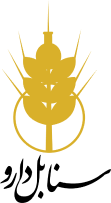اثر عصاره آبی فلوس بر نتایج باروری مادر، برخی شاخصهای سرمی و فراوانی ناهنجاری های جنینی در موش صحرایی
Saeed Hakiminia, Zahra Esmaeeli, Ali Akbar Moghadamnia, Seyyed Gholam Ali Jorsaraei, Farideh Feizi, Sorayya Khafri, Zahra Memariani, Hoda Shirafkan, Seyyed Ali Mozaffarpur
چکیده:
پیشینه: عصاره آبی فلوس(Cassia fistula) به طور سنتی به عنوان ملین در زنان باردار استفاده میشد. با این وجود اثرات جنینی و مادری آن در بارداری هنوز مورد مطالعه قرار نگرفته است.
روش ها: متوسط دوز کشنده(50%) (LD50) در موش اندازهگیری شد. علاوه بر این یک گروه کنترل، موشهای باردار در 5 گروه تجربی دیگر (n=12) عصاره آبی فلوس(Cassia fistula) (2000 و 1000 ، 500 میلی گرم بر کیلوگرم)، تونین 80(10%درصد) و آب مقطر را در دوران بارداری تا زمان زایمان(21-23 روز). برخی از شاخصهای سرمی در نمونه خون مادر پس از زایمان بررسی شد. ارزیابیهای هیستوپاتولوژیک و هیستومورفومتری برروی برشهای منتخب موشهای تازه متولد شده انجام شد.
نتایج: محتوای آنتراکینون عصاره آبی فلوس 0/34 % درصد وزنی بود. متوسط دوز کشنده خوراکی(LD50) ( بیش از 5000 میلی گرم بر کیلوگرم به دست آمد. هیچگونه سقط جنین و ناهنجاری نوزادی در گروهها مشاهده نشد. قد و وزن فرزندان با تجویز 500 و 2000 میلیگرم بر کیلوگرم عصاره نسبت به گروه شاهد کاهش معنیداری داشت. تغییر معناداری در اوره و کراتینین خون مادر مشاهده نشد.
نتیجه گیری: به نظر میرسد عصاره آبی فلوس(Cassia fistula) در بارداری بی خطر باشد.
Abstract:
Background: Cassia fistula was used traditionally as laxative in pregnant women. Nevertheless, its fetal and maternal effects in pregnancy have not been studied yet.
Methods: Oral (Lethal Dose, 50%) LD50 was determined in mice. In addition, a control group, pregnant rats in other 5 experimental groups (n=12) received orally C. fistula aqueous extract (500, 1000 and 2000 mg/kg), tween80 (10%) and distilled water during pregnancy up to the delivery (21-23 days). Some serum indices were evaluated in maternal blood samples after delivery. Histopathologic and histomorphometric evaluations were performed on the selected slices of newborn rats.
Results: Anthraquinone content of the aqueous extract was 0.34% w/w. Oral LD50 was obtained more than 5000mg/kg. No abortions and newborn anomalies were observed in groups. The height and weight of the offspring were significantly reduced by the administration of 500, and 2000 mg/kg of extract compared to control. There was no significant change in maternal blood urea and creatinine. Higher concentration (2000mg/kg) led to ALT elevation. ALS levels decreased dose-dependency in treatment groups comparing to control. Histopathological findings showed significant lung vascular congestion, and hypertrophy of heart in group tween80, and significant hepatic parenchymal inflammation in tween80 and 2000mg/kg and 1000mg/kg groups. In all tissues of all groups, malpighian body area and bowman’s capsule space significantly increased compared to the control group.
Conclusion: It seems C. fistula extract is safe in pregnancy. Because of confounding role of tween80 in histopathological finding, more research is necessary.


